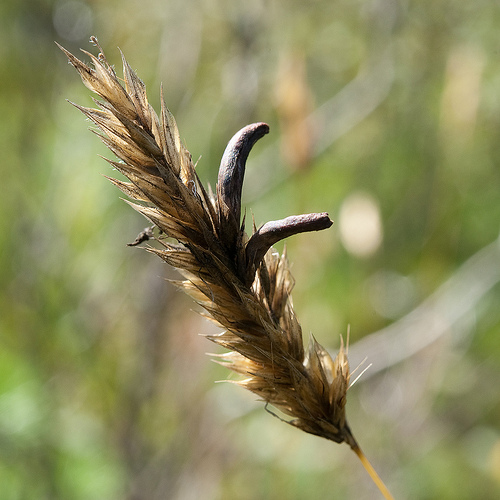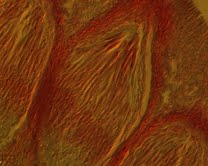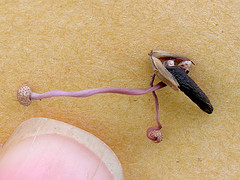Where do I Belong? (Classification)

Domain-Eukarya
Kingdom-Fungi
Phylum-Ascomycota
Class-Sordariomycetes
Order-Hypocreales
Family-Clavicipitaceae
Genus-Claviceps
Species-Claviceps purpurea
Domain-Eukarya
Claviceps purpurea is classified under the domain Eukarya
because it has a true nucleus.
Kingdom-Fungi
This organism is placed under the kingdom, Fungi because it is a
"fun-guy!" Okay, I know, that was lame but I had to get that joke on
here somehow! The real reason this organism is placed in this
kingdom is because it exhibits
the defining traits of fungi. Some of these traits are an
alternation of generations, reproduction by means of spores, a non-motile
adult form, cell walls of
chitin, and heterotrophic by means of exoenzymes.
Phylum-Ascomycota
Members of this phylum are also known as the sac fungi because they
reproduce sexually in a sac-like ascus. Another trait of
the members of Ascomycota is that they reproduce asexually by means
of conidia. Check out
this other sweet member of the Ascomycota!
Subphylum-Pezizomycotina
Members in this subphylum are all filamentous,
sporocarp-producing species. It is very ecologically diverse and
does contain plant pathogens, like ergot.

Class-Sordariomycetes
Members of this class produce perithecial asci, which means that the
asci line the walls of a small chamber where there is one small hole
that allows for spore release. The picture does a great job
illustrating what this looks like. They
also are mammalian pathogens (which means they cause diseases in
mammals).
Order-Hypocreales
Members of this order are recognized by the brightly colored asci
they possess.
Family-Clavicipitaceae
All members of this family are obligate parasites. This means that
all members cannot live unless they are parasitizing a host. They
sound like such a nice family!

Genus-Claviceps- "club-headed"
Members of this genus are very appropriately named due to the fact
that the sclerotium of these fungi all shoot out small mushroom-like
stalks with a spherical head. These are the fruiting bodies and are
called stroma. They look like curly drumsticks to me!
Species-Claviceps purpurea-"purple"
This species, Claviceps purpurea, is placed here because
its sclerotium has a distinctive, dark purple color. You can see
this in the picture above.
PHYLOGENETIC TREES
How is Claviceps purpurea related to other
organisms? That's a great question! To help you answer that
question, here are a
couple phylogenetic trees to help show some relationships!
PHYLOGENETIC TREE #1
*I made this tree to help show the general classification
of ergot. We start out at the bottom of the tree and we know that it
is not prokaryotic because it has a nucleus, so we continue up the
right side of the tree. Fungi do not have cell walls of cellulose,
so we keep going. We also know that Claviceps purpurea is
heterotrophic and that the cells are composed of chitin. After this point on my tree, all the
designations are phyla within the kingdom Fungi, so we can be sure
that we are on the right path. We also know that it
doesn't have motile spores, doesn't form endomycorrhizae, and that it also
doesn't form zygospores. It is a considered a dikaryon, so then we
have one final split in the road that we have to decide the way to
go. This last step is easy though, because we already know that it
forms its sexual spores internally in asci, so it must be a member
of the Ascomycota, which indeed it is!
PHYLOGENETIC TREE #2

*This tree is much more specific than the one above, relating
species in the genus, Claviceps based on DNA sequencing.
These species were compared using the ITS1-5.8S-ITS2 rDNA
sequencing. rDNA means that the ribosomal DNA was used. This is an
area of the genome which includes the internal transcribed spacer
regions (ITS) and generates the large part of the large ribosomal
subunit (5.8S). The difference in base pairs were compared among
these species and the number of differences is what was used to
separate them. One interesting thing that I discovered about this
relationship is that there is a significant difference in the host
distribution of these organisms. For example, Claviceps purpurea
colonizes pooid grasses and C. grohii colonizes sedges and
rushes, but their gene sequence shows striking similarities, 97%
similar in the case of these two organisms! It's amazing what
genetics reveals.
Wow! That was pretty awesome! Ready for more? Then go on to
ADAPTATION!
If not, go HOME.